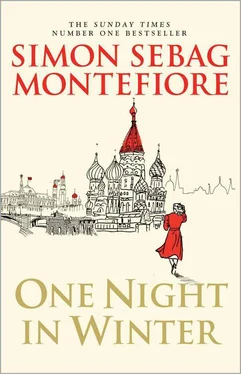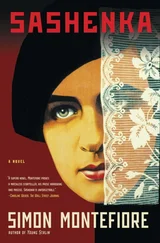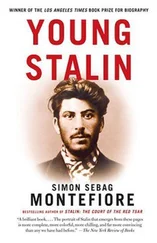Stalin was a stickler for showing no favour to the children of leaders, and especially not to his own. He refused to swap his eldest son Yakov when he was captured by the Nazis, and was infuriated by the spoilt and decadent escapades of his second son Vasily. During the war, Vasily took his unit on a fishing expedition during which he and his men used grenades to catch fish. A man was killed and an outraged Stalin had Vasily cashiered and demoted. But such was the reverence shown to the Leader’s son (and Stalin’s own ambitions for the boy) that he was soon promoted way beyond his limited talents to air force general. On his watch, an air force flypast went catastrophically wrong and ended in a plane crash, and he was demoted again.
In 1945, Stalin was informed at Potsdam by his son Vasily Stalin that Soviet aircraft frequently crashed owing to a manufacturing flaw. Stalin then orchestrated the so-called Aviators’ Case against Air Marshal Novikov and other leading military officers as well as Aviation Minister Shakurin. The case was partly aimed at the Politburo member in charge of aircraft, Georgi Malenkov, who was temporarily demoted, but was actually part of a sustained campaign to diminish the power of the Soviet marshals, particularly the ultimate hero, Marshal Georgi Zhukov. Novikov and many other officers were viciously tortured and some were shot. Malenkov was temporarily sent to check the harvest in Central Asia.
Stalin encouraged a rivalry between two secret-police chiefs: Beria, long-serving head of the NKVD, and Victor Abakumov, chief of SMERSH, who reported directly to Stalin. Abakumov and Beria were constantly complaining about each other to Stalin. In 1945, Stalin reduced the power of Beria in secret-police matters by sacking him as Interior Minister. Yet Beria remained Stalin’s top manager and Deputy Premier, taking charge of the most important project of the era: the creation of the Soviet nuclear bomb. Beria’s protégé Merkulov remained State Security Minister until he was sacked in 1946 and replaced by Abakumov. After Stalin’s death, Beria, Merkulov and Kobylov were executed in 1953 and Abakumov in 1954.
In 1945, Stalin suffered some sort of coronary attack or minor stroke. He was extremely sensitive about the details of any illnesses which might undermine his political power and suspicious of doctors: hence the Doctors’ Plot. His own long-term doctors who diagnosed his arteriosclerosis were arrested. (See below.)
Sexual abuse of female prisoners and ordinary female citizens was the informal prerogative of secret-police bosses, who often used the threat of the arrest of loved ones to blackmail women into giving sexual favours: on his arrest in 1953, Beria’s rape and abuse of hundreds if not thousands of women were revealed. His two chief bodyguards, Colonels Sarkisov and Nadaraia, were exposed as pimps and kidnappers of girls that Beria spotted on the streets of Moscow. It was revealed that Beria had twice caught VD during the war. Abakumov too abused his position. In 1946, Abakumov ordered the arrest of film star Tatiana Okunevskaya after she turned him down; earlier, Beria had drugged and raped her. Stalin turned a blind eye to these cases of favoured potentates but encouraged his henchmen to collect evidence to use against them later.
After 1945, the rise of American superpowerdom and the American support for Zionism that led to the creation of Israel turned Stalin’s existing prejudices against Jews into obsessional and deadly anti-Semitism. Stalin created a series of anti-Semitic cases against Soviet Jews, leading first to sackings, then arrests, the killing of Yiddish actor/Jewish leader Solomon Mikhoels in a faked car crash in 1948 and finally the deadly anti-Jewish cases of 1949–50 (in which most of the defendants – Party officials and writers – were executed). In the Doctors’ Plot of 1952–3, doctors in the Kremlin Clinic, particularly the cardiologists and the Jews, were accused of murdering and planning to murder Politburo leaders, starting with Andrei Zhdanov, who died of heart disease in 1948.
The wife of Nikolai Bulganin, Politburo member, Armed Forces Minister, Marshal, taught English at one of Moscow’s élite secondary schools.
During this period Eisenstein was writing and directing the movie Ivan the Terrible Part One and Part Two ; Stalin supervised the script. The Katyusha was a famous Soviet rocket launcher and there was a popular song called ‘Katyusha’ – but no movie of that name.
The fictional celebrity couple of writer Constantin Romashkin and the film star Sophia ‘Mouche’ Zeitlin are inspired partly by the experiences of the real film stars Tatiana Okunevskaya and Valentina Serova. The latter was married to Constantin Simonov, famed poet and Soviet official. As I explained above, Okunevskaya suffered bitterly at the hands of Beria and Abakumov. Serova was luckier but had an affair with Vasily Stalin. Their stories appear in many books, including Simonov’s own autobiography, but is told best in Orlango Figes’ excellent book The Whisperers .
On women in government: one inaccuracy. Stalin distrusted women – and doctors – and never promoted any female to be a full minister, though there were several leaders’ wives serving as deputy ministers in his government, including the wives of Politburo members Molotov and Andreyev. Both women were dismissed at least partly for their Jewish origins. Like Dashka Dorova, Polina Molotova was ultimately arrested and divorced by her husband. On her return from prison after Stalin’s death, she too returned to her marriage.
The details of daily life, school life and bureaucracy are also accurate but I have telescoped some of the dates for the purposes of my story. For example, the conversion of People’s Commissariats to Ministries – so that the secret police changed from the NKGB to the MGB and the NKVD became the MVD – was a little later in 1946, as was the promotion of Vasily Stalin to general; the granting of military ranks to secret policemen; the sacking of Merkulov as MGB Minister and his replacement by Abakumov; and the real Aviators’ Case. The real Children’s Case actually took place in 1943. The full story of the history behind this novel can be found in my Stalin: The Court of the Red Tsar but I also recommend Anne Applebaum’s Gulag and Orlando Figes’ The Whisperers and Just Send Me Word, both of which contain many examples of the sort of stories told in this novel and Sashenka .
Simon Sebag Montefiore’s history books are world-wide bestsellers, and are published in over 40 languages. Catherine the Great & Potemkin was shortlisted for the Samuel Johnson, Duff Cooper, and Marsh Biography Prizes. Stalin: The Court of the Red Tsar won the History Book of the Year Prize at the British Book Awards. Young Stalin won the Costa Biography Award (UK), the LA Times Book Prize for Biography (USA), Le Grand Prix de la Biographie Politique (France) and the Kreisky Prize for Political Literature (Austria), and is currently being developed as a TV mini-series. Jerusalem: The Biography won the Jewish Book of the Year Prize (USA) and was number one bestseller in the UK. He is the presenter of the BBC TV series Jerusalem, Making of a Holy City 2011 and Rome, History of the Eternal City.
A Visiting Professor at Buckingham University and a Fellow of the Royal Society of Literature, he lives in London with his wife, the novelist Santa Montefiore, and their two children. For more information, see: www.simonsebagmontefiore.com
Also by Simon Sebag Montefiore
FICTION
Sashenka
NON-FICTION
Jerusalem: The Biography
Читать дальше












